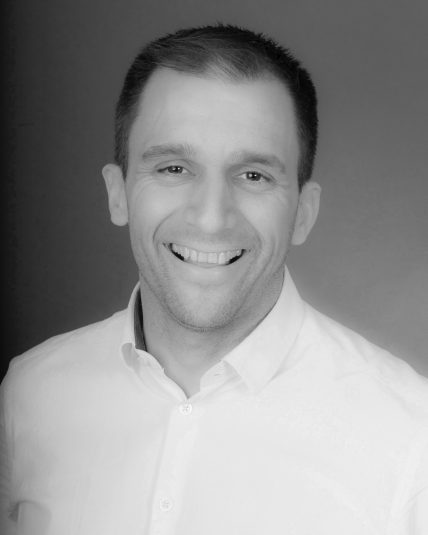Survey: Shifting Pro-Loudspeaker Market To Grow $1 Billion by 2021
Growth in installed and live audio will be propelled by new capital, emphasis on sound quality
Story Highlights
A confluence of dynamic factors is helping propel the professional-loudspeaker market to new heights. That’s according to the Professional Loudspeaker Market Assessment, a study undertaken by UK-based Futuresource Consulting. An extended analysis of the survey reflects what has become a market crowded with brands and options.
According to the survey, brands are becoming more assertive in their marketing, as opportunities increase — including the demand for enhanced quality in installed sound, such as in stadiums and arenas — but competition squeezes the economic landscape.
“In this maturing market,” says Chris McIntyre-Brown, associate director, Futuresource Consulting, “it’s no longer just about being in the right place at the right time; brands are placing a greater emphasis on data analytics and research to identify growth opportunities.”

Futuresource Consulting’s Chris McIntyre-Brown: “Moving forward, the brands that will succeed will be those who reinvent themselves as end-to-end solution providers.”
He notes that the importance of data and strategy has been amplified by private-investment acquisitions by the likes of Ardian (for d&b Audiotechnik) and Transom Capital Group (for Loud Technologies, which includes Mackie, Ampeg, EAW, and Martin Audio brands), and Samsung’s acquisition of Harman.
“With access to growth capital and greater commercialization, watch out for strategies built around integrated, sustained campaigns which achieve [key performance indicators] yet maintain brand integrity,” McIntyre-Brown suggests. “It’s a balancing act that needs to preserve the hard-earned customer relationships, which have traditionally been critical to success.”
The report examines seven product segments — point-source cabinets, line arrays, column arrays, compact systems, studio monitors, flush-mount speakers, and cinema sound — across five broad segments, including touring/rental and installed commercial. It predicts that the professional-loudspeaker market, currently valued at $2.6 billion worldwide, is on track to reach $3.6 billion by 2021 despite a number of major market shifts. Regionally, AsiaPac is the fastest-growing market. By the end of 2017, it will overtake the EMEA region to become the second-largest market after the Americas, and Futuresource research projects that it will be worth $1.3 billion by 2021. EMEA is the slowest-growing market but continues to expand, with growth projected out to 2021.
Sound Quality Is Important
The aggregated installed-commercial verticals will lead the way for market development, according to the survey, posting healthy growth to 2021 and beyond. Sports venues, which have recently encompassed more consumer-oriented features, such as high-end restaurants, will be part of that growth.
“In the installed commercial segment, there is a subsegment emerging that is placing increased importance on sound quality, leading to higher-value installs,” the report states, noting the emphasis “creating an immersive customer experience and improved intelligibility.”
Audio Still on the Defensive
The report seems to suggest that budget pressures are pitting audio and video expenditures against each other, with audio often — but not necessarily — coming in second, as visual enhancements are more strongly emphasized (the Halo oculus at the Atlanta Falcons’ new stadium is a recent example). Combined with significant growth in the use of visual effects to improve the audience experience, “audio is taking a direct hit,” the report concludes. “Even where overall budgets aren’t experiencing downward pressure, audio is taking a reduced proportion, squeezing margins.”
Notes McIntyre-Brown, “As consumers place more importance on the live-music experience, the demand for concerts, festivals, and music events continues to climb. More events means more demand for equipment. And, although these higher expectations have led to visual effects’ being used to enhance the show at the expense of audio, there could be future opportunities for new audio solutions in the [installed segment].”
Immersive Unaccounted For?
Interestingly, the report does not take into account the potential impact of immersive audio, such as Dolby’s Atmos and Fraunhofer’s MPEG-H, which will increase the demand for professional-grade loudspeakers for broadcast and other critical-monitoring applications by as much as two-thirds. Most of the high-end production-truck providers are now either expanding 5.1-surround–monitoring arrays with as many as four overhead speakers or are at least costing that process out.
“This wasn’t something that we specifically asked about in the research,” a Futuresource Consulting spokesperson explains. “When we asked about current trends, it wasn’t mentioned by the respondents.”
Looking Ahead
In the future, two entrenched trends will offer advantages to brands: synergy through consolidation, and broader reach via increased verticality. The progressive aggregation of brands under the Harman Professional marque (now owned by Samsung) is an example of the first, with audio, video, and control product lines across broadcast, live sound, and other sectors. The acquisition or development of additional services, such as large-screen–video vendor Panasonic’s acquisitions of integrators TS Sports in the U.S. and Alan Dick Communications in Europe, underline the second.
“Moving forward, the brands that will succeed will be those who reinvent themselves as end-to-end solution providers,” says McIntyre-Brown. “When it comes to installation, being able to offer a complete system — which includes amplifiers, microphones, networking, zoning systems and security systems — could be the difference between winning and losing. Bosch is already successfully doing this, and Harman is well-placed to do the same.
“Watch out for the brands that can build relationships and form partnerships, from either a product or channel perspective,” he continues. “These will be the ones that survive and thrive in the new audio environment, where software integration, networking, sound monitoring, and production tools all converge upon the pro-loudspeaker ecosystem. The times are changing for the pro-loudspeaker industry, with a range of challenges that will test manufacturers and ultimately open up new opportunities across the entire landscape.”
